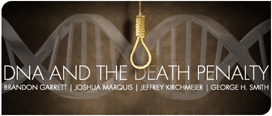Returning to an important question in Prof. Brandon Garrett’s original essay, one might wonder whether the impact of the recent DNA exonerations will fade over time. While DNA exonerations have highlighted problems with the death penalty in recent years, arguably this effect may fade if such exonerations become less frequent. Garrett notes that most DNA exonerations today occur in old cases because current cases are able to test DNA evidence at trial instead of years after convictions and death sentences. Joshua Marquis notes that a wider use of DNA can lead to more accurate convictions, which too would lead to fewer DNA exonerations in the future. On the other hand, George Smith suggests that the moral issues are the more important questions in the death penalty debate, so fewer DNA exonerations would not affect that debate. Meanwhile, I have agreed with Garrett that the DNA exonerations reveal deep problems in the capital trial and sentencing system that will not disappear.
Many of the issues in this debate are not new. For example, in 1661, two brothers and their mother were convicted of the murder of William Harrison in England. The three were then hanged and gibbeted near Campden for the murder. But a few years after the execution, Mr. Harrison returned to town, explaining that he had disappeared because he was pressed to serve on a sailing ship. The discovery of the living “victim” was a strong argument against capital punishment, but for many, it did not shake their belief in the death penalty. They assumed that the executed mother was a witch who was behind events that were “signs of Satan’s evil designs and of God’s overwhelming mercy.”[1] England retained the death penalty for approximately three hundred more years before abolishing it.[2]
The DNA exonerations and other evidence of wrongful convictions will continue to play a role in the death penalty debate, but even overwhelming evidence of examples of wrongful convictions will not resolve the debate for some. Will the innocence debate gradually disappear? Approximately 350 years after the wrongful hanging in England, we are still debating the significance of innocent people on death row. While recent exonerations are teaching us some lessons on how to improve the criminal justice system, the innocence issue will be with us as long as we have the death penalty.
Notes
[1] Bruce P. Smith, “The History of Wrongful Execution,” 56 Hastings L.J. 1190-92 (2005).
[2] Jeffrey L. Kirchmeier, “Dead Innocent: The Death Penalty Abolitionist Search for a Wrongful Execution,” 42 Tulsa L. Rev. 403, 433 (2006).

